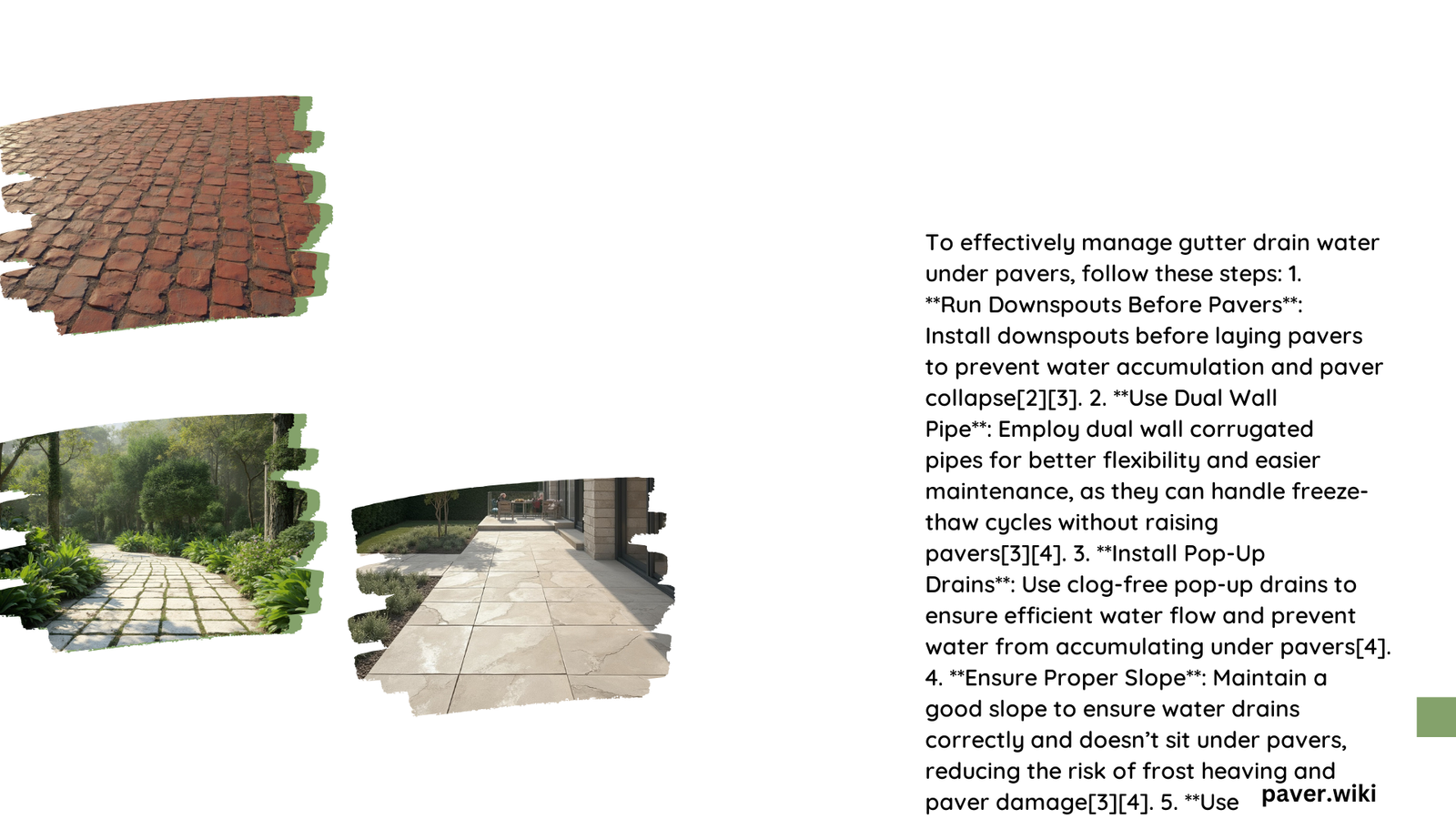Gutter drain pavers represent an innovative solution for managing water runoff in residential and commercial landscapes. These specialized paving systems combine structural integrity with advanced drainage capabilities, allowing water to permeate through surfaces while maintaining load-bearing strength. Engineered to redirect and filter stormwater, gutter drain pavers offer sustainable alternatives to traditional drainage methods, reducing surface runoff and minimizing environmental impact.
What Are Gutter Drain Pavers?
Gutter drain pavers are specialized paving systems designed to manage water flow and provide efficient drainage solutions. Unlike traditional impermeable surfaces, these pavers allow water to pass through, reducing surface runoff and preventing water accumulation.
Key Components of Gutter Drain Pavers
| Component | Description | Function |
|---|---|---|
| Base Layer | Compacted sub-base material | Provides structural support |
| Permeable Grid | Interlocking paver system | Allows water infiltration |
| Aggregate Fill | Clean, angular stones | Facilitates drainage and load distribution |
How Do Gutter Drain Pavers Work?

Gutter drain pavers function through a multi-layered approach:
- Surface Infiltration
- Water immediately penetrates the porous surface
- Aggregate fill acts as a natural filter
-
Reduces surface runoff and potential flooding
-
Sub-Surface Drainage
- Water moves through multiple layers
- Geotextile fabric prevents soil erosion
- Directs water away from critical infrastructure
What Materials Are Best for Gutter Drain Pavers?
Recommended Materials
- TRUEGRID Permeable Pavers
- Load-bearing capacity: Over 17,000 psi
- Thickness: 1.8 inches
-
Weight: Approximately 1.32 lbs/sf
-
Concrete Permeable Pavers
- Moderate load-bearing capacity
- Lower initial cost
- Less environmental flexibility
What Installation Techniques Ensure Optimal Performance?
Step-by-Step Installation Process
- Site Preparation
- Excavate area to required depth
- Ensure level ground
-
Install geotextile fabric
-
Sub-Base Construction
- Compact native soil
- Add specified aggregate layers
-
Maintain recommended 1-2% slope for drainage
-
Paver Installation
- Lay permeable grid systems
- Fill with appropriate aggregate
- Compact thoroughly
How to Maintain Gutter Drain Pavers?
Maintenance Recommendations
- Cleaning Frequency: Quarterly inspection
- Recommended Cleaning Method:
- Use mild detergents
- Avoid harsh chemicals
- Pressure wash if necessary
Potential Maintenance Challenges
- Potential algae growth
- Aggregate material clogging
- Periodic re-leveling might be required
What Are the Cost Considerations?
Cost Breakdown
- Initial Installation: $10-$25 per square foot
- Long-Term Maintenance: Minimal compared to traditional drainage systems
- Lifespan: 20-30 years with proper maintenance
Environmental Benefits
- Reduces urban heat island effect
- Minimizes stormwater runoff
- Supports groundwater recharge
- Provides natural filtration
Professional Recommendations
- Consult local drainage experts
- Consider site-specific soil conditions
- Evaluate load-bearing requirements
- Plan for long-term sustainability
Conclusion
Gutter drain pavers offer a sophisticated, environmentally friendly approach to landscape drainage. By understanding their components, installation techniques, and maintenance requirements, property owners can implement effective water management solutions.
